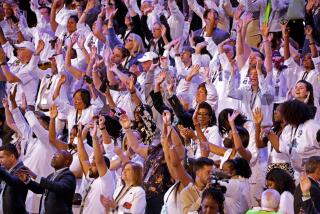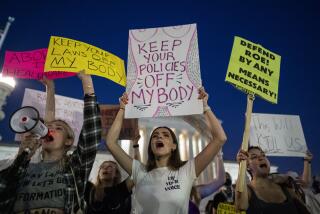*foot notes
- Share via
Saturday is Women’s Equality Day, marking the 80th anniversary of the passage of the 19th Amendment granting American women the right to vote.
* Seventy-two years before that event, women’s suffrage was first seriously proposed at a women’s rights convention in Seneca Falls, N.Y. At that historic meeting, such civil rights pioneers as Elizabeth Cady Stanton, Lucretia Mott, Mary Ann McClintock and Frederick Douglass signed a Declaration of Sentiments--a document affirming the equality of men and women, and the vote as women’s basic right and the means to gaining other rights.
* In 1869, Susan B. Anthony, head of the National Woman Suffrage Assn., began the drive for a constitutional amendment. Anthony made headlines when she was arrested for attempting to vote in the 1872 presidential election. Anthony died in 1906, 14 years before the 19th Amendment was finally ratified.
* The Equal Rights Amendment was written in 1921 by suffragist Alice Paul. It was passed by Congress in 1972 and has been approved by 35 states, three short of the 38 needed for ratification.
* On Aug. 26, 1970, the National Organization for Women sponsored a nationwide “strike for equality.” Women in 40 cities organized demonstrations to protest that women still did not have equal rights. In New York City, 50,000 women marched down Fifth Avenue and listened to speeches by Betty Friedan, Gloria Steinem and Bella Abzug. The next year, Congress officially recognized Aug. 26 as Women’s Equality Day.
* Although no major events are being planned locally, NOW is sponsoring a “Bush Whacker Protest” demonstration this morning at Republican National Committee headquarters in Washington, D.C., to commemorate Women’s Equality Day and to call attention to George W. Bush’s “abysmal record on the issues women care about.”
More to Read
Sign up for Essential California
The most important California stories and recommendations in your inbox every morning.
You may occasionally receive promotional content from the Los Angeles Times.













